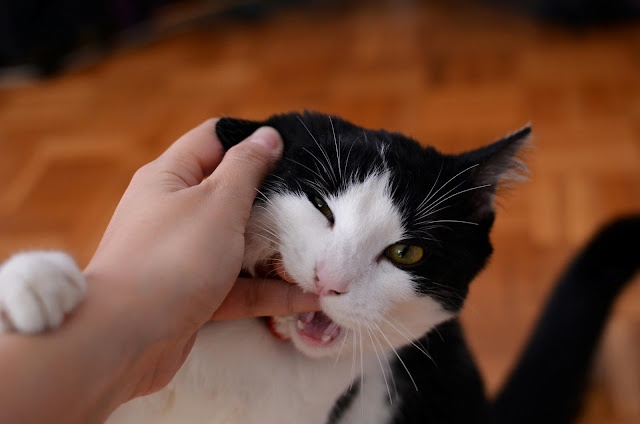Understanding Your Cat: How to Decode Feline Behavior
Understanding Your Cat: How to Decode Feline Behavior
Cats are complex creatures with a wide range of behaviors that can sometimes be puzzling to their owners. Understanding your cat’s actions and body language can enhance your relationship and help you meet their needs more effectively. In this guide, we’ll decode common feline behaviors and what they mean, helping you build a deeper connection with your feline friend.
1. Purring: A Sign of Contentment
One of the most common and soothing sounds a cat makes is purring. While purring is often associated with contentment, it can also indicate other emotions.
- Contentment: When a cat purrs while being petted or curled up in a cozy spot, it usually means they’re happy and comfortable.
- Pain or Stress: Cats may also purr when they’re in pain or feeling stressed. If a cat’s purring is accompanied by signs of discomfort or illness, it’s important to consult a vet.
2. Tail Positions: What They Reveal
A cat’s tail is a crucial communication tool. The position and movement of their tail can give you insights into their emotions.
- Straight Up: A tail held high usually signifies a confident, happy cat. It’s a sign of a friendly mood.
- Puffed Up: When a cat’s tail is puffed up, it often means they’re frightened or trying to make themselves look larger to ward off threats.
- Tucked Under: A tail held low or tucked under the body indicates that a cat is feeling submissive, scared, or anxious.
3. Kneading: A Comforting Behavior
Kneading, or “making biscuits,” is a common behavior where a cat pushes its paws alternately against a soft surface.
- Puppyhood Memory: This behavior originates from kittenhood, when cats knead their mother’s belly to stimulate milk flow.
- Affection: In adult cats, kneading is often a sign of comfort and affection, showing that they feel safe and relaxed in your presence.
4. Scratching: Marking Territory and Maintenance
- Territorial Marking: Scratching is a natural behavior for marking territory. Providing a scratching post can help satisfy this instinct and prevent damage to your furniture.
- Claw Maintenance: Regular scratching helps cats keep their claws healthy and sharp.
5. Hiding: Understanding Their Need for Security
- Seeking Solitude: If your cat is hiding, they might be feeling overwhelmed or need some alone time. Ensure they have a safe, quiet place to retreat to.
- Illness or Pain: If hiding becomes frequent or sudden, it may be a sign of illness or discomfort. Monitor their behavior and consult a vet if necessary.
6. Chirping and Trilling: Communication Beyond Meowing
In addition to meowing, cats use other vocalizations like chirps and trills to communicate.
- Chirping: Cats often make a chirping or chattering sound when they’re excited or frustrated, such as when watching birds or squirrels.
- Trilling: A trill is a friendly greeting or an invitation to play, indicating that your cat is in a sociable mood.
7. Grooming: Self-Care and Bonding
- Self-Grooming: Cats groom themselves to keep their coats clean and free of parasites. It also helps them regulate their body temperature.
- Social Grooming: When cats groom each other, it’s a sign of affection and bonding. This behavior, known as allogrooming, helps strengthen social bonds among cats.
8. Play Behavior: Engaging Their Predatory Instincts
Play is an important part of a cat’s life, reflecting their natural hunting instincts and providing essential physical and mental stimulation.
- Interactive Play: Engaging your cat with toys that mimic prey can help satisfy their hunting instincts and prevent boredom.
- Solo Play: Cats may also entertain themselves with toys or objects around the house, which helps keep them active and engaged.
Understanding your cat’s behavior can enhance your bond and ensure you’re meeting their needs effectively. By paying attention to their body language, vocalizations, and actions, you can provide a more fulfilling and responsive environment for your feline friend. Embrace these insights into feline behavior and enjoy a deeper connection with your beloved cat!
.png)









.jpeg)



